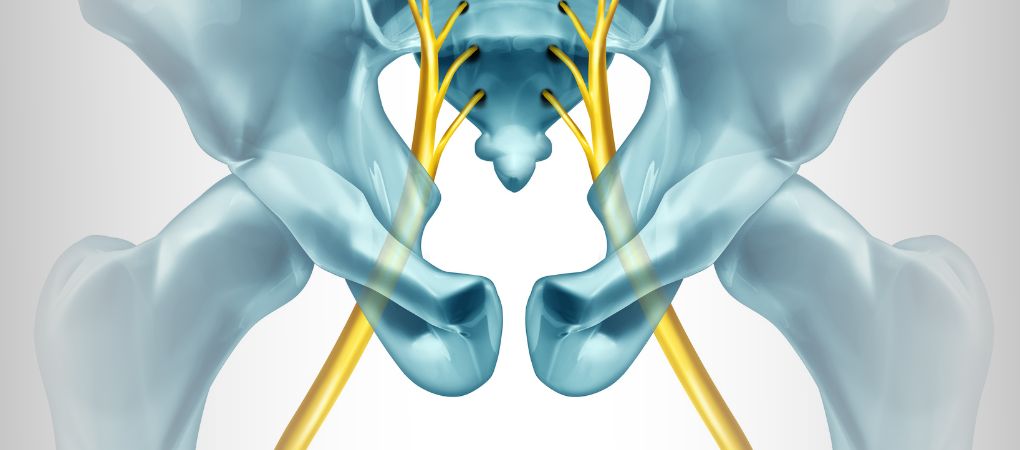Francesca Galiano
|
16/08/2022 - Last update 29/12/2022
David P. Newman, Nicholas H. Tinkham, Giuseppe R. Sterbis, Adam T. Soto | Year 2021
Successful Resolution of Chronic Testicular Pain With an Impairment-Based Treatment Program
Pathology:
Testicular pain
Type of study:
Case report
Date of publication of the study’:
2021/Mar/12

Purpose of the study
- Objective: to report the effect of a conservative treatment program including OMT on a person with 1-year history of testicular pain
- Measured outcomes: report of the symptoms and pain (intensity and impact on daily life) through Defense and Veterans Pain Rating Scale (DVPRS)
Participants
- Number: 1
- Description: 27-year-old male with a 12-month history of right-sided testicular and inguinal pain. No history of trauma, injuries, family history of genitourinary conditions or medication consumption that could have induced his symptoms. At the time of symptoms onset the patient experienced painful urination with bilateral suprapubical and flank pain and lumbalgia, of an intensity ranging from 6 to 8 out of 10, measured on Visual Analog Scale (VAS). No occurrence of hematuria or testicular problems were detected; the urinalysis was normal, as well as the computed tomography, except for a calcification on the left side of the prostate. The recommended therapy consisted of rest and indomethacin. Nevertheless, his symptoms exacerbated: a urinary tract infection appeared and it was treated with antibiotics, only to be followed by a new exacerbation. Through repeat tomography and other examinations a diagnosis of prostatitis was issued, although after 6 weeks a new diagnosis of pelvic pain syndrome followed. Further urologic and gastroenteric analyses did not provide any further information.The young man then underwent a right spermatic cord block through an injection targeting the genitofemoral and ilioinguinal nerves.
However, the testicular pain increased and worsened to the point of waking the patient up a few times during the night. Afterwards, the boy followed a 5-week physiotherapy directed to the pelvic floor: the practice of different exercises supported by biofeedback produced an improvement in hip flexibility and urination, which, however, did not last. This whole situation entailed continuous problems both at work and in his married life. Once arrived at the authors’ clinic, the young man was physically evaluated: distal palpation to the inguinal canal at the external inguinal ring reproduced both testicular and inguinal pain.
At the moment the pain was 1 out of 10, with the capacity to affect his activities sleep, mood and stress equal to 2-3 out of 10 according to DVPRS. The extension of the right hip was lower than the left one and a pulling sensation along the groin at maximum lumbar extension was reported. The evaluation of the sacroiliac joint showed a postural asymmetry and, through various tests of motion, a hypomobility of the joint. An analysis of the iliopsoas suggested the presence of an entrapment of the ilioinguinal nerve, diagnosis towards which the process of differential diagnosis eventually leaned.
Interventions and evaluations
- at each visit, evaluation of pain and of its impact on daily activities, sleep, mood and stress through DVPRS
- 5 visits
- OMT focused on the sacroiliac joint
- tissue mobilization assisted through specific instruments (cupping) along the inguinal canal
- stretching exercises and muscle strengthening for self management
Results
After the first visit, OMT favored a restoration of the sacroiliac joint motion, but the pain did not subside. Despite the stretching program, one week later, at the follow-up the pain had increased. A cupping treatment along the inguinal canal followed, which favored a slight improvement in pain. On the third visit the patient underwent another cupping treatment and a manual stretching of the iliopsoas. These interventions induced a disappearance of the pain, which was still absent at visit 4, during which the man reported having resumed jogging and having sex with his wife without pain.
By continuing to follow the exercise program, the pain remained equal to 0 out of 10 at the last visit and was not reproduced by any of the tests. Therefore, release and stretching of the iliopsoas were applied. After 1 year, the boy reported the emergence of only one episode of inguinal pain, which however resolved after self-management through stretching and deep massage.
Discussion
This case showed how a conservative treatment aimed at implementing a myofascial release of ilioinguinal and genitofemoral nerves favored the resolution of a pathological condition that had lasted for 1 year. The program focused on restoring tissue and joint motility of the areas involved, thus restoring also afferent nerve communication. Although the pain did not decrease after the OMT, the recovery of the motility of the sacroiliac joint (which was maintained over time) may have been decisive, as a dysfunction of this joint can result in multiple painful patterns and syndromes. The stretching of the iliopsoas as well as the cupping along the inguinal canal were chosen as treatments on the basis of both anatomical and clinical considerations (eg, reproduction of pain through palpation and specific mobilization). Naturally, more rigorous and better structured studies are needed to evaluate the efficacy and the generalizability of a similar therapeutic program.
The review of Osteopedia
By Marco Chiera
Strengths: accurate description of the tests carried out and of the process of differential diagnosis; good description (and tabular representation) of the progress of the therapy; good description of the difficulties involved in reaching a diagnosis in case of inguinal and testicular pain and of the different therapeutic options; description of an integrated therapeutic program.
Limits: unfortunately, there are no indications to understand how much the OMT itself influenced the final result.

Are you an osteopath?
Register and enjoy the membership benefits. Create your public profile and publish your studies. It's free!
Register now
School or training institution?
Register and enjoy the membership benefits. Create your public profile and publish your studies. It's free!
Register now
Do you want to become an osteopath? Are you a student?
Register and enjoy the membership benefits. Create your public profile and publish your studies. It's free!
Register now







